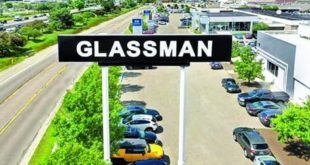
All six of the nation’s public retailers boosted finance-and-insurance profits to unprecedented levels last year as pack leader AutoNation Inc. cleared $ 1 billion in total F&I revenue and gross profit — the highest on record for a public retailer. Executives at some of the nation’s largest retailers cited a variety of factors, including the success of branded F&I product sales, vendor partnerships, deeper product penetration and F&I training.
Quarter after quarter, F&I gains sprinkled with quarter records and all-time records led the nation’s largest groups to their highest earnings to date in 2019. Still, several public retailers noted potential F&I headwinds resulting from an uptick in used-vehicle sales.
AutoNation, of Fort Lauderdale, Fla., averaged nearly $ 2,000 in F&I profit per vehicle last year. CEO Cheryl Miller said on a call with investors that about $ 650 of that was generated from indirect financing, while approximately $ 1,350 stemmed from product sales. On a same-store basis, the retailer reached more than $ 1 billion in F&I profits in 2019, up 4 percent.
Miller has long cited concerns the blended dollar — the mix of F&I profits on new vehicles compared with used, as the sales mix shifts in favor of used vehicles — will drag down F&I profit per vehicle. In the fourth quarter, AutoNation’s same-store F&I profit per vehicle rose 7 percent, or $ 130, to $ 1,989.
Here are the fourth-quarter, same-store F&I profit-per-vehicle results at the other groups:
- Group 1 Automotive Inc. of Houston, rose 2.6 percent, or $ 47, to $ 1,843.
- Sonic Automotive Inc. of Charlotte, N.C., rose 6.1 percent, or $ 101, to $ 1,745.
- Asbury Automotive Group Inc. of Duluth, Ga., rose 3.2 percent, or $ 52, to $ 1,695.
- Lithia Motors Inc. of Medford, Ore., rose 9.9 percent, or $ 138, to $ 1,526.
- Penske Automotive Group Inc. of Bloomfield Hills, Mich., rose 7.7 percent, or $ 90, to $ 1,329.
Asbury, Lithia
As the auto retail industry continues pivoting to used-vehicle sales, some of the nation’s largest retailers are noticing a dip in profits. Used-vehicle sales tend to gross less in F&I profit per vehicle than new-vehicle deliveries, retailers note, because new vehicles often present the greatest opportunity for F&I product sales.
Despite stronger F&I results, gross profit per vehicle declined $ 120 on average at Asbury, with executives citing higher sales volumes as a contributor to weaker profits. Company officials instead pointed to stronger total profits on used-vehicle units on an investor call this month.
The growth in F&I dollars, according to Dana Clara, Asbury’s senior vice president of operations, “demonstrates the professionalism and talent of our team. Note that when we think of our gross profit per vehicle, we look at the total front-end yield, which combines new, used and F&I gross profit.”
Asbury CEO David Hult noted the company’s average gross profit on a used car is among the best of the publics.
“We tend to be at the top of our peer group for used-car margin, except one, I believe, and I think they put their reconditioning dollars” in the per vehicle retailed figure, Hult said. “It certainly could be better. But again, we also look at parts and service reconditioning dollars in the F&I dollars.”
Lithia, too, considers full-vehicle profits rather than a focus solely on F&I. CEO Bryan DeBoer told analysts this month that the nation’s No. 3 retailer looks at the total profit average per deal, which can dip on used-vehicle sales.
“The disadvantage that you get in F&I on a value auto product is that you’re bringing someone into your business life cycle earlier in their life, which is something that is easy to discount and [they]say that you shouldn’t do it, because it’s bringing your F&I average down,” DeBoer said. “But ultimately, if it brings the dollars to the bottom line, or expands your customer base, which is how we look at everything, then it’s an important give-and-take that you always need to balance between.”
Lithia cited increased volume from acquisitions, expanded product offerings and increased penetration rates to its higher F&I profits. In a government filing, Lithia said additional sales training, refinement of product offerings and pricing and revised compensation plans will be “critical” to Lithia achieving F&I targets.
Sonic, Penske
Sonic set a record for annual F&I gross profit per vehicle, at $ 1,743, a 12 percent increase. Sonic’s same-store F&I revenue was up 10 percent to $ 335.8 million for the same period.
Penske, historically behind its peers in F&I profits, once again cited vendor partner Reynolds and Reynolds in discussions of F&I profit growth. Penske completed the rollout of docuPad, an interactive tabletop F&I system, at all of its U.S. stores in the fourth quarter. CEO Roger Penske said that allows the group to digitally engage customers and reduce inefficiencies in the funding process.
“This is an asset that we really never knew how good it was until we started using it,” Penske said. “We ended up with a little or no paper in the offices. We can access information from anywhere in the country with your phone. And to me, that’s going to be the future of the business.”
Melissa Burden contributed to this report.


